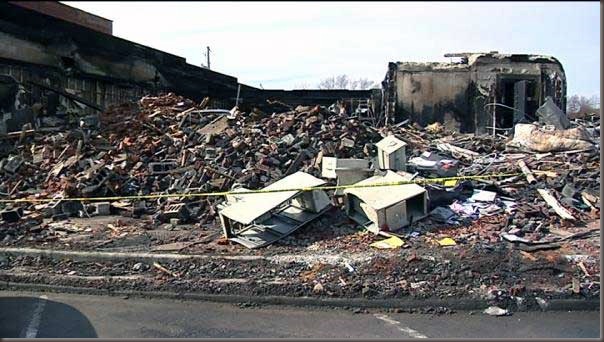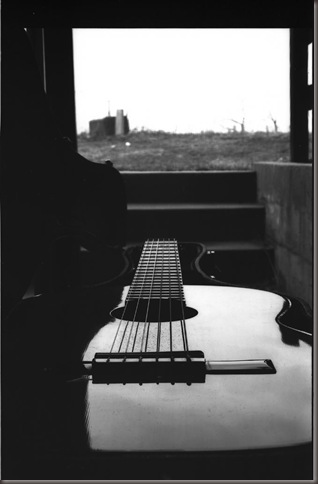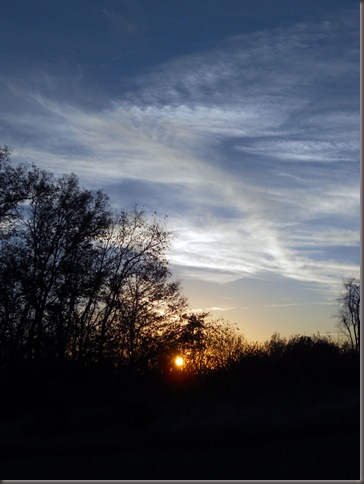29 November 2010
27 November 2010
Now What Was I Doing - Photographic Theory
I love the discussions of style and technique among photographers. These debates are endlessly interesting to me. Holga, HDR, Minimalist, Pictorialist, Photojournalism, Bokeh, Abstract, and on and on – they make me think and ask questions that I might not have even considered otherwise. Yet, in our vigorous discussions of style and technique, we often lose sight of the fundamental function of photography, and that is to record. First and foremost, we are striving with our cameras to capture a visual image of the way something looks.
We all hope that something more than simple recording happens when we create an image. We hope that when we create an image, the subject and moment captured will carry meanings which will extend far beyond the instant when the shutter snapped. We hope that the photographer will bring vision and experience to the creation which will reveal layers of meaning and value much deeper than the mere surface appearance of a subject. We hope that those who view the image will bring their own experience and interpretation to the graphic which will give life to the image, extending far beyond the original impulse of the photographer to snap the image.
And yet, when all of the theory and romance of photography is peeled away, photography is a matter of recording how the light falls upon a particular subject in a specific place in a discrete moment in time. Many photographers have taken to calling photographs “captures” which carries the sense grabbing a moment and preserving it, and I like that. When we make a picture, first and foremost, we are recording how something looked at that moment. We are creating an historical record. Style, art, interpretation, layers of meaning, and the rest, come afterwards.
Now, why am I musing on these obvious fundamentals? Earlier this summer, I went driving through southern Indiana and found myself in the picturesque town of Paoli, Indiana. It has a classic 19th Century county seat layout. The court house sits in the town square, surrounded on all four sides by businesses housed in ancient buildings facing inward toward the court house. In the southwest quadrant of the square was an old building with an intriguing spiral stairway outside the building. I snapped this picture:

The stairway caught my eye first because it was an oddity being on the outside of the building and second, I liked it because of the visual contrast of the spiral stairs against the straight metal box running up the wall beside it. The photo may never make the top ten photographs of the 21st Century, but I like it. A couple of days ago, I heard on the news that a huge fire had broken out in the square at Paoli. Eventually, images of the devastation filtered out, and I found this:
This is the building that once held my lovely spiral staircase. The building and staircase are gone. Somehow I doubt that they will ever be replaced in the way they were. It hit me that buried in my archive of CD’s and negatives, is a record of how this building looked before it was destroyed. One might question the relative value of preserving a record of an old building in a small country town, but it was a part of my world, enough to trigger me to photograph it, and now it’s gone. In a practical sense, the photos could be useful for insurance claims or for a restoration if one were ever attempted. What’s important to me is that I captured a piece of my world before it disappeared. That’s enough justification for me. I recorded it with my camera.
My earliest and perhaps most powerful photographic influence was LIFE Magazine. My parents subscribed to LIFE and Time all through my childhood. In that powerful, formative time in my life, photography was what you saw in LIFE. If I could produce a photograph that looked like the black & whites in LIFE, I had succeeded. In terms of models, one could do worse than emulate the LIFE photographers: Eisenstaedt, Bourke-White, Steichen, Halsman, Capa, Feininger, Lange and so many more. The LIFE photographers were, for the most part, photojournalists and realists. They brought great artistry to their photography, but job one was coming back with a portrait of Hemingway that looked like Hemingway.
In terms of style, I have to confess that I’m still strongly, probably unconsciously, influenced by this ideal: get a good picture. A good picture means correct exposure, sharp focus, pleasing composition and a smooth tone curve of grays. I never have been a Zone System fanatic, but the closer I can get to filling all eleven zones with a subtle gradation of grays (or color), the happier I am. Overly contrasty pictures still bother me. Underexposed pictures bother me. My idea of a great photograph is still the exquisite portrait of Ernest Hemingway glaring down from the ladder at photographer Alfred Eisenstaedt. Eisenstaedt shot on a 6x6 cm Rolleiflex twin lens reflex camera. I’m such a fan of Eisenstaedt that I actually own a TLR 6x6 similar to Eisenstaedt’s. I guess that’s what you would call hero worship because the thing is damned difficult to shoot pictures on.
So, I’m amazed when people deliberately throw their cameras out of focus, use rotted film to get weird colors, or computer software to open up the shadows and suppress highlights (HDR). And make no mistake: I’ll use all of these techniques and I have done some wonderful shots using them. I’m a graphic artist by trade and I am not above manipulating the hell out of a photograph to get what I want for an ad or poster. But, when it really counts, and I’m shooting a picture that’s important, I invariably revert to get a good picture – sharp focus, correct exposure and pleasing composition. I’m a recorder. I want to capture what my eyes see. To me, this is the greatest wonder of the camera: to be able to capture a moment in time as it looked, with the meanings and memories it carries.

My Most Successful Photograph
In the world’s terms, this is my most successful photograph. It has been published, reprinted, and sold more prints than any other photo I have done. Back in the day, it was published in several literary magazines; a T-shirt was done of it, and people continue to buy prints of it online. It’s my guitar. It’s a Garcia Grand Concert 1A classical guitar. My father bought it for me when I was in college so I could get a job teaching guitar lessons to pay my way through school. He used a single twenty dollar gold piece to buy it. The instrument accomplished its goal admirably, and I received my B.A. debt free.
It fascinates me that of all of the photos I have done, of people, places and things, that this one continues to experience the the success that it does. Don’t look a gift horse in the mouth. But it does, and that pleases me, because if I had to pick an image that conveyed what that part of my life was like, I couldn’t do any better than this one.
I wish I had a nickel for every hour I have spent with this guitar. It is still just as wonderful as it ever was, or more so. Guitars get better with time up to a point. Their tone improves with the vibrations that are played through them. There is science to back that up. I’ve read about it but I can’t explain it. It’s just like great old violins. The wood cures and dries, and some parts of it are shaken out by the vibration of the tones. As I understand it, the process continues for about forty years with guitars. Beyond that, the tone doesn’t change very much. This guitar was built in 1972, so it has reached that point of tonal clarity and brilliance so cherished by acoustic guitar players. Its voice is magical. It can still play me into dreams.
The photograph was shot on a Nikon FM with a 50mm lens using Kodak Plus-X Pan film. I developed and printed it in the bathroom. The location was Lexington, Kentucky.
Times change and people change, but good tools don’t change. I don’t play guitar as much as I once did. My interests and priorities have changed, but the guitar is still as wonderful and capable as it ever was. Maybe I’ll find a gifted, young classical player and give it to him or her so its voice will be heard as it should be. Until then, it will keep me company and remind me of a time when music dominated my life.
…and, yes, if you would like to have a print, RedBubble will make you a nice one. Click here.

01 November 2010
Singular Vision
 You have a thought, a feeling or an outrage, and it occurs to you to write it down, make a video or draw a picture that expresses it. But then you think there are millions of others out there thinking the same thing, many with greater communication or artistic skills than you have. So, you end up not writing it, not drawing it, and your vision is never captured or recorded. Mass culture has convinced you that your point of view is inconsequential. This is a loss.
You have a thought, a feeling or an outrage, and it occurs to you to write it down, make a video or draw a picture that expresses it. But then you think there are millions of others out there thinking the same thing, many with greater communication or artistic skills than you have. So, you end up not writing it, not drawing it, and your vision is never captured or recorded. Mass culture has convinced you that your point of view is inconsequential. This is a loss.
Expressing and recording your personal history is vitally important in its own right. It needs no further justification or rationalization. It has intrinsic value. Because of our awareness of the sheer multitude of humanity, we tend to assume that there must be a million other people with the same thoughts and impressions that we have, and hence, our impressions are insignificant. There is really no logical basis for this assumption. The opposite may actually be true: that for at least a moment in time, our personal vision may be singular, and vitally important.
It isn’t exactly front page news, but the mainstream mass media is a polluted source of information. By “mainstream mass media” I mean the whole complex: television, motion pictures, newspapers, the recording industry and commercial publishers. They share a common fatal flaw in that they live on advertising and are accountable to business interests whose first priority is to turn a profit. Do you think that Rupert Murdoch built News Corp. in order to provide us with a deeper and more accurate description of the human condition? Does CNN care what’s going through your mind as you sit in your kitchen trying to decide what to eat for supper? Probably not. If the record of the mainstream mass media is all that future generations have of us, they will neither know nor understand who we are.
One might not care about what future generations understand – I happen to care, but not everyone does – but most of us do care, at some level, about understanding ourselves and being understood. If you make a habit of capturing your experiences, you will collect in time a picture of your life. The medium doesn’t matter very much. It can be pictures, words, sounds or objects. You can come back to it periodically and you will see different things in it, often things of which you were unaware at the time you snapped the picture or made the journal entry. Especially through the lens of time, greater understanding can come. I often have the experience of finding things in my journals and photo albums that point out something very clearly to me now, and I marvel at how blind I was to it at the time.
 Sometimes, working on a creative piece can bring out something that I’m struggling with and help me to become aware of it. Prior to the creative work, there is just the feeling. The process of recording it to paper, film or megabytes often helps me to identify an experience I’m having. It may even help in a therapeutic way and allow me to make peace with something that is eating at me.
Sometimes, working on a creative piece can bring out something that I’m struggling with and help me to become aware of it. Prior to the creative work, there is just the feeling. The process of recording it to paper, film or megabytes often helps me to identify an experience I’m having. It may even help in a therapeutic way and allow me to make peace with something that is eating at me.
Mostly, I do this stuff because I love doing it. I love the activity of creating pictures and writing. I would do it for that reason alone and be completely content. Most of the time, I’m not doing self-therapy or creating a record of historical significance. Most of the time, I’m just having fun. Nevertheless, I believe that the personal history angle is important.
I have lived long enough to experience how lives and ideas get left behind as culture rushes rapidly forward. I have lived long enough to forget interesting episodes in my own life and I’m glad I jotted down a journal entry which provides a touchstone to the memory. Sometimes, just a few lines or a photo is enough to return a wonderful moment to memory. I have a strong sense that much has been lost and swept aside, even in my own time which to me doesn’t seem that long. Whole lives that were once important to their families and communities are now little more than records at the court house. Ways of living and thinking, some of which still have great value, are left by the side of the road in the inevitable march of days. Creating personal history hedges against this loss. It doesn’t prevent it, but it saves something.
As the artist and the subject, you can’t judge what’s important or what isn’t. You have to leave that to others. Do you think that Beethoven could have told you that the 5th and 9th symphonies were going to be really important and the 6th and 7th weren’t going to be? No, he was just Beethoven doing his Beethoven thing. I have long suspected that the Apostle Paul had no inkling that his letters were going to become half of the New Testament. We can’t know the value or even the whole content of the things we do. We shouldn’t even try. But most of all, we shouldn’t allow ourselves to be hypnotized into thinking that everyone else is thinking our thoughts, and that our own experience is of no consequence.

Samhain Sundown
Sundown on Samhain, and I’m waiting for the witches to fly. The light half ends and the dark half begins. Night will rule the day until Beltane. Light the great fire, extinguish all the little fires, and throw the new bones into the flames.
Spirits are in the air. Little demons and faeries are in the street. Don the mask and walk between the flames to be cleaned. It is the day of the dead. Only the flames will cleanse us. We will speak with the dead, and cast fortunes in the night.
Lead the herds down from the mountains and lay up hay and fodder for the dark half. Barley, oats, wheat, turnips, and apples all must be gathered in, lest the faeries blast them with icy breath. Gather peat and wood, and stack it high by the hearth. We will need every stick.
Take the flame of beginnings to light a new way and draw the circle of light.














